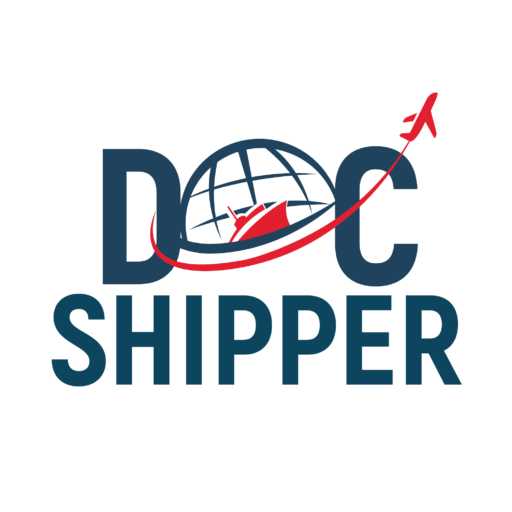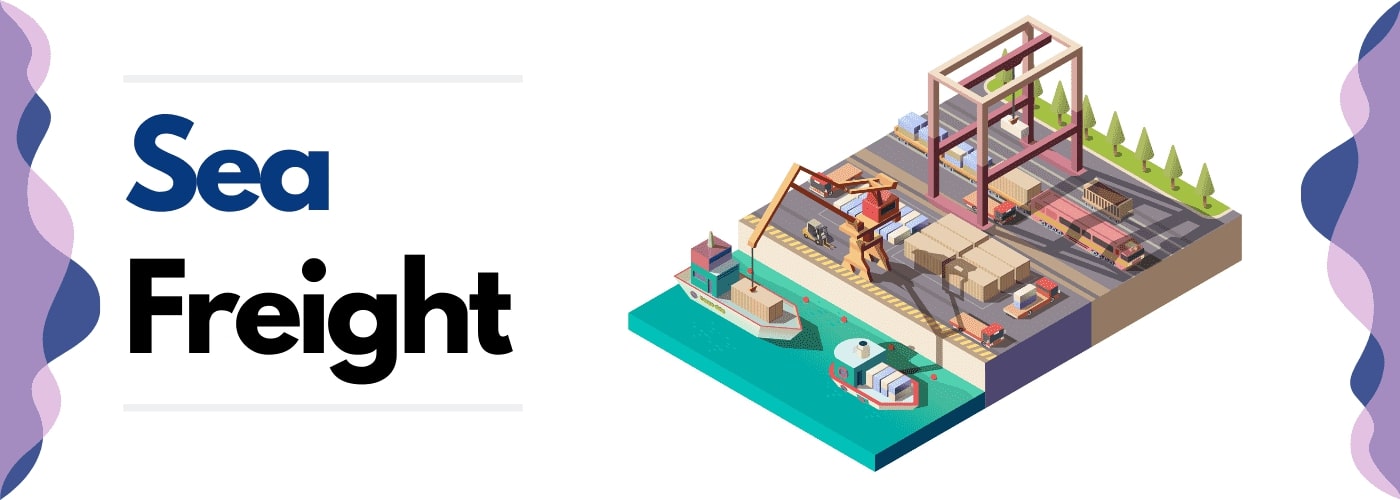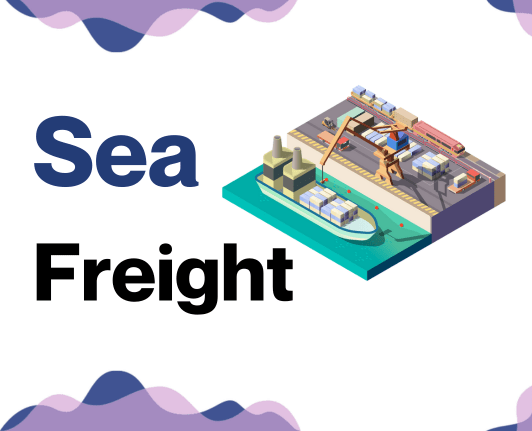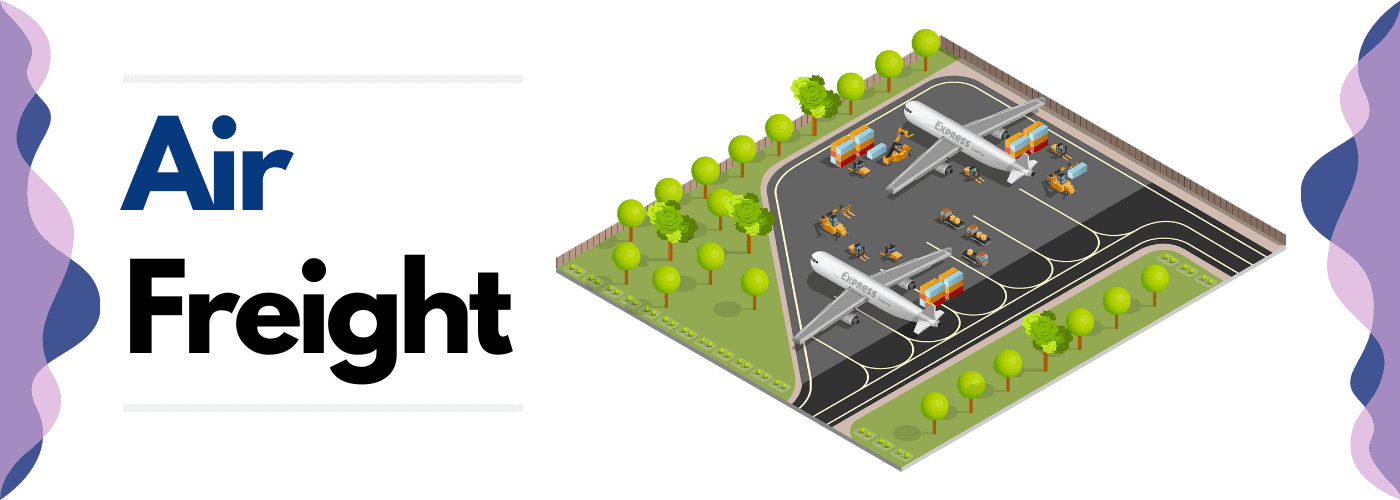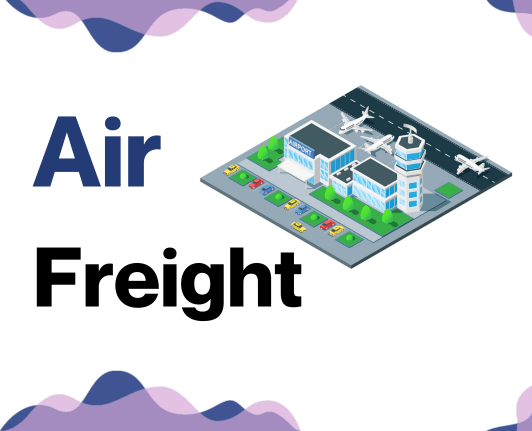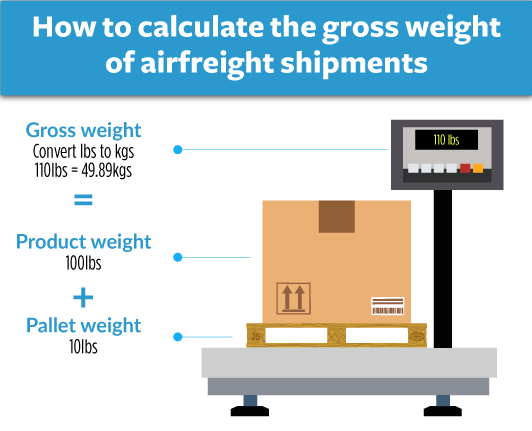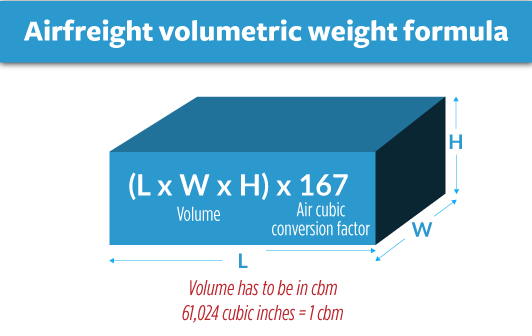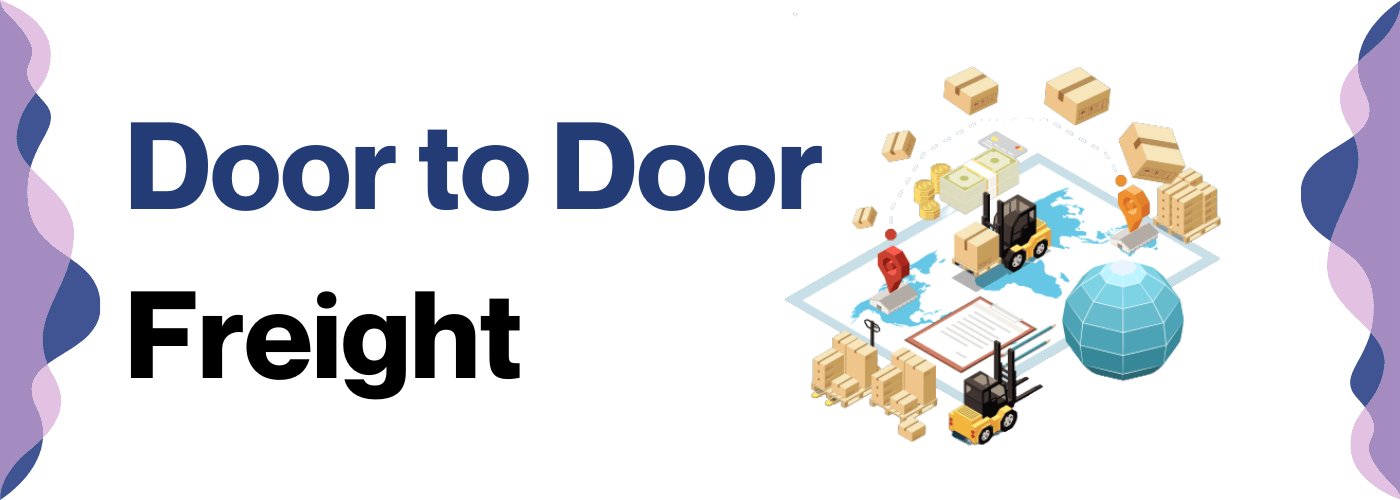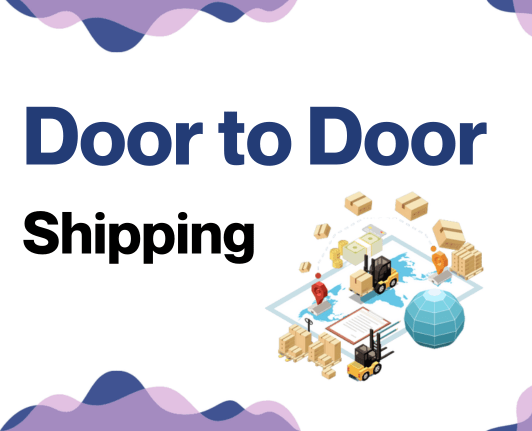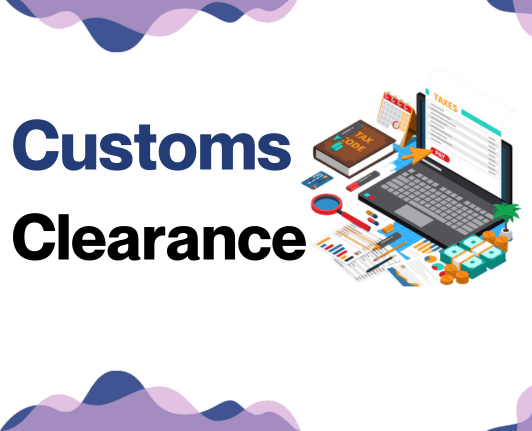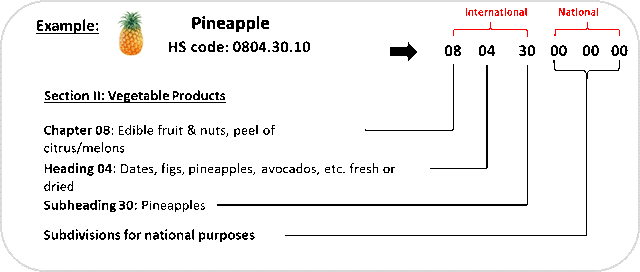Have you ever wondered how leap-year freight rules work between Qatar and Sweden? Jokes aside, unlocking the potential of international shipping hinges on grasping crucial aspects like transit times, freight rates, and complex customs regulations. This guide is meticulously designed to illuminate every crevice of the logistics pathway - from assessing the merits of sea, land, and air freight to tackling the labyrinth of customs clearance, duties, and taxes.
Tailored for businesses, we delve into advice that not only answers your queries but addresses your specific pain points too. If the process still feels overwhelming, let DocShipper handle it for you! As an expert in international freight forwarding, we streamline every step of the process, turning what could be iterations of trial and error into smooth success stories for your business.
Which are the different modes of transportation between Qatar and Sweden?
Choosing a transportation method for shipping goods from the sizzling desert landscape of Qatar to the icy fjords of Sweden can feel like picking a path in a complex maze. But don't fret! The primary options usually boil down to air and sea freight. Think of them as two different trains: the Express (Air freight) offers speed but costs more, while the Local (Sea freight) is more budget-friendly but slower. Understanding the unique combination of your business needs, logistics limitations, and costs can guide you to the best choice.
How can DocShipper help?
Shipping goods from Qatar to Sweden? Let DocShipper eliminate the guesswork for you. We handle all, from logistics to customs procedures. We're your one-stop solution for a hassle-free shipment experience. Got a question or need a quick estimate? Reach out to our experts anytime, we're here to help you make the right move.
DocShipper Tip: Sea freight might be the best solution for you if:
- You're dealing with hefty quantities or large-scale goods. Sea freight is your go-to for maximizing space without stretching your budget.
- Your cargo doesn't have an urgent deadline, as sea freight typically has longer transit times compared to air or rail.
- Your shipping routes are between major ports, allowing you to leverage the extensive global network of sea shipping lanes.
Sea freight between Qatar and Sweden
Get ready to ride the waves of ocean shipping between Qatar and Sweden! With bustling trade relations, these countries are connected by their essential cargo ports – Hamad in Qatar and Gothenburg in Sweden, tying their economic lifelines together. Ocean freight offers an economical, if slower option, especially for high-volume goods – think of it like the tortoise, proving slow and steady can indeed win the race!
Yet, like directing a ship in stormy seas, many shippers often find navigating the complexities of this route tricky, with quite a few pitfalls along the way. Practical aspects like customs declarations, packaging specifications, and in-transit care can take shippers into rough waters if not handled correctly. But fear not, we'll dive into these topics, and more, in this section by revealing best practices and expert advice, so your ocean freight journey from Qatar to Sweden becomes as smooth as a calm sea!
Main shipping ports in Qatar
Port of Hamad
Location and Volume: The Port of Hamad is strategically located in the Umm Al-Houl region of Qatar. It's the main seaport, servicing most of the region's maritime trade operations. As of the latest data, it handles up to 2 million TEUs annually, making it a high-volume port.
Key Trading Partners and Strategic Importance: The Port of Hamad plays a crucial role in Qatar's trading relationships, with key partners including China, the United States, India, and numerous Gulf and European countries. Since the port's inception, it has successfully reshaped Qatar’s maritime landscape and played an integral role in diversifying its economy.
Context for Businesses: If you're aiming to expand your business relationships with Middle Eastern and Asian markets, leveraging the services of the Port of Hamad could be strategically prudent. The port is well-known for state-of-the-art equipment, skilled workforce, huge cargo handling capacity, and direct access to Qatar's major transport highway, which can expedite your shipping timelines and operational efficiency.
Ras Laffan Port
Location and Volume: Situated approximately 80 km north of Doha, Ras Laffan Port is managed by Qatar Petroleum and primarily devoted to exporting LNG-related products. While it does not contribute to the TEUs, the massive scale of gas exports through Ras Laffan is undeniably significant.
Key Trading Partners and Strategic Importance: Particular in oil and gas sectors, it has built strong trading relationships with countries like Japan, South Korea, India, China, and many ASEAN and European nations. It's strategic importance lies in its role as the gateway for Qatar's gas exports, contributing significantly to the country's economy.
Context for Businesses: If your business is in the petrochemicals or energy sectors, then Ras Laffan Port holds substantial strategic value. Its specialized LNG terminals and infrastructures pave the way for efficient energy exports. This could potentially enhance your energy supply chain and drive your strategic goals.
Mesaieed Port
Location and Volume: Mesaieed Port is situated approximately 50 km south of Doha and has been operational since 1949. Its primary purpose is to serve the industrial cities of Mesaieed and its surrounding regions. The port lacks the volume of a conventional container port but holds importance due to the specific commodities it handles.
Key Trading Partners and Strategic Importance: Given its role in Qatar's industrial and manufacturing sector, its key trading partners are major industrial countries like the US, Germany, China, and a range of countries across the globe depending on the import needs of the industrial area.
Context for Businesses: For businesses associated with the industrial and manufacturing sector, and with operations located in the industrial city of Mesaieed, this port could offer strategic benefits, from reduced internal transport times to efficient import of raw materials for manufacturing processes.
Main shipping ports in Sweden
Port of Gothenburg
Location and Volume: The Port of Gothenburg is located on the western coast of Sweden and is the largest port in the Nordic region. It handles approximately 40.2 million tonnes of cargo per year.
Key Trading Partners and Strategic Importance: The port plays a crucial role in the trade with Germany, the UK, Netherlands, and Belgium. Gothenburg is also strategically important for transshipment with connections to over 130 destinations worldwide.
Context for Businesses: If you're planning to access the Nordic market or looking for a reliable transshipment point, the Port of Gothenburg would be a solid choice due to its vast network and high handling capacity.
Port of Helsingborg
Location and Volume: Situated in the Oresund region, the Port of Helsingborg operates as the second largest container port with an annual volume of over 8.2 million tonnes of cargo per year.
Key Trading Partners and Strategic Importance: Its primary trading partners are Finland, Denmark, and Germany. The port's strategic location makes it a gateway to Sweden's southern provinces.
Context for Businesses: The Port of Helsingborg is ideal if your business needs connectivity to Northern Europe and immediate access to Sweden's dense southern markets.
Port of Stockholm
Location and Volume: Set on the eastern coast, the Port of Stockholm is the third-largest port by volume, handling around 8.8 million tonnes of cargo per year.
Key Trading Partners and Strategic Importance: Key trading partners include Russia, Finland, and the Baltic countries. The port is the hub of Sweden's eastern maritime corridor.
Context for Businesses: If your focus is trade with eastern Europe and Russia, the Port of Stockholm could be a strategic element of your logistics due to its optimal position in the Baltic Sea.
Port of Norrkoping
Location and Volume: The Port of Norrkoping is positioned in the Braviken area, with an annual throughput of 8,800 TEU.
Key Trading Partners and Strategic Importance: The port has strong trade ties with Germany, Belgium, and the Netherlands. Due to its proximity to Stockholm, it's considered strategically significant for import and export businesses.
Context for Businesses: The Port of Norrkoping could help you if associate with key European markets or deem Stockholm's proximity beneficial for business.
Port of Malmo
Location and Volume: Placed in southern Sweden, the Port of Malmo deals with about 13 million tonnes of freight annually.
Key Trading Partners and Strategic Importance: Denmark and Germany figure as its main trading partners. The port effectively links Sweden to the major ports of the north-western region of Europe.
Context for Businesses: If you want to take advantage of its fine-tuned connectivity with northwestern Europe, the Port of Malmo can add value to your shipping strategy.
Port of Sundsvall
Location and Volume: The Port of Sundsvall, an essential northern hub, services approximately 4,000 TEU annually.
Key Trading Partners and Strategic Importance: It maintains a brisk trade with Finland and Russia. Positioned in the Bothnian Sea, it’s noted for its strategic importance in connecting northern Sweden with Baltic countries.
Context for Businesses: Consider the Port of Sundsvall if your business involves trading with the Baltic countries or if you seek to grow in the northern Swedish markets.
Should I choose FCL or LCL when shipping between Qatar and Sweden?
Are you gearing up to ship goods between Qatar and Sweden? It's paramount to make the right shipping choice, as your decision could impact cost, delivery time, and the entire outcome of your operation. This section pulls back the curtain on two key sea freight options: Full Container Load (FCL) and Less than Container Load (LCL), otherwise known as consolidation. Stick with us as we delve into the differences, advantages, and suitability of both methods, empowering you to make an informed choice tailored to your specific shipping requirements. Let's begin!
LCL: Less than Container Load
Definition: LCL (Less than Container Load) shipping is a method of transportation where multiple shippers share space in the same container for different consignments. It's ideal for shipments that don’t require the space of a whole container.
When to Use: LCL is more price flexible and a good choice for low volume cargo. It's especially practical when your cargo volume is less than 13/14/15 CBM, reducing the excess space and cost of a full container.
Example: For instance, a small Qatari business exporting handmade crafts to Sweden might not have large quantities to ship. Therefore, opting for an LCL shipment allows them to share container space with other businesses, improving cost efficiency.
Cost Implications: While LCL is generally cheaper due to shared container space, bear in mind that you'd be paying for the volume your cargo occupies and not the weight. Other charges such as LCL freight, handling charges at both origin and destination, and customs charges are equally divided among the consigners based on the volume occupied by their cargo.
FCL: Full Container Load
Definition: FCL shipping, or Full Container Load, refers to hiring an exclusive container for transporting goods, usually a 20'ft or 40'ft container. It's a perfect match for high-volume shipments since the container will be solely used for your cargo.
When to Use: FCL becomes economically viable when your cargo surpasses the threshold of 13-15 CBM (cubic meters). Because the FCL container is sealed from origin to destination, it ensures the security and intactness of your freight, reducing risks of potential damages.
Example: Picture this. A furniture manufacturer in Qatar needs to transport 16 CBM of handcrafted tables to a retailer in Sweden. Opting for FCL shipping ensures that the furniture occupies a 20ft container devoid of other shippers' cargo, reducing the likelihood of damage during transit.
Cost Implications: Although initial FCL shipping quotes may seem steep, it's actually more cost-effective when dealing with high-volume shipments. Considering its high-security benefits, the overall cost, balanced against potential damage-related losses with shared shipping options, makes FCL the more reasonable option for certain types of cargo. Keep in mind that the cost also varies depending on the size and type of the container chosen. So, FCL can indeed be a wise investment, offering both safety and economies of scale.
Unlock hassle-free shipping
DocShipper streamlines your cargo shipping between Qatar and Sweden, freeing you from the complexities of global trade. Our ocean freight mavens offer dedicated support, deciphering whether consolidation or full containers are best for your situation. Variables like the type and amount of goods, urgency, and budget guide our decisions. Ready to simplify your shipping process? Reach out today for a free, personalized shipping estimation. DocShipper, where your cargo strategy becomes hassle-free.
How long does sea freight take between Qatar and Sweden?
When shipping goods by sea freight from Qatar to Sweden, the typical journey takes approximately 28 to 35 days. These transit times factor in various elements such as the specific ports used, the weight of the shipment, and the type of goods being shipped. Each shipment is unique and these times can fluctuate. For a more detailed and tailored quote, it's recommended to get in contact with a competent freight forwarder like DocShipper.
Below is an overview of the average transit times from Qatar's main freight ports to Sweden's:
| Qatar Ports | Sweden Ports | Average Transit Time |
| Hamad Port | Port of Gothenburg | 67 |
| Hamad Port | Port of Helsingborg | 63 |
| Hamad Port | Port of Stockholm | 62 |
| Hamad Port | Port of Norrköping | 62 |
*Remember, these are estimated times and specific shipments might vary. Reach out to us at DocShipper for an accurate time and cost quote for your specific needs.
How much does it cost to ship a container between Qatar and Sweden?
Establishing an exact cost of shipping a container from Qatar to Sweden isn't straightforward due to numerous factors. Variables such as the Point of Loading, Point of Destination, choice of carrier, nature of goods, and monthly market fluctuations can significantly impact ocean freight rates. Therefore, the shipping cost per CBM can vary extensively. However, you won't be left to make sense of this puzzle alone. Our dedicated shipping specialists are committed to demystifying this process and providing you with the best possible rates, quoting on a case-by-case basis. Let us collaborate to navigate this journey together, crafting an optimized shipping solution just for you.
Special transportation services
Out of Gauge (OOG) Container
Definition: An OOG container is a special type of container designed to handle out of gauge cargo which does not fit into standard shipping containers due to its size or shape.
Suitable for: It is ideal for oversized goods such as heavy machinery or equipment, large artworks, or industrial parts.
Examples: Items like windmill wings, factory fixtures, or yachts would typically use an OOG container.
Why it might be the best choice for you: If your shipping items from Qatar to Sweden involve any oversized or irregular shaped goods, the OOG container provides the flexibility you need to ensure safe shipment.
Break Bulk
Definition: Break bulk refers to the shipment of goods that are individually loaded, stacked, and counted directly onto the vessel or onto trays or pallets before being loaded onto the vessel.
Suitable for: This method suits large goods that can't be split into smaller, lighter parcels or cannot be containerized.
Examples: Examples of this type could include large generators, turbines or mining equipment.
Why it might be the best choice for you: If your goods are too large or awkwardly shaped for containers, the break bulk method provides a seamless way to transport your cargo from Qatar to Sweden.
Dry Bulk
Definition: Dry bulk shipping refers to the transportation of homogenous goods loaded directly into the cargo space of a ship, without any specific packaging.
Suitable for: This shipping method suits loose goods such as grains, coal, iron ore, or sand.
Examples: Businesses transporting construction materials, rice, or wheat between Qatar and Sweden might use the Dry bulk method.
Why it might be the best choice for you: If you're transporting loose cargo load of similar goods in large amounts, Dry bulk shipping offers convenience and cost-effectiveness.
Roll-on/Roll-off (Ro-Ro)
Definition: Ro-Ro is a type of vessel designed to carry wheeled cargo, such as cars, trucks, semi-trailer trucks, trailers, or railroad cars that are driven on and off the ship on their own wheels.
Suitable for: It's perfect for all types of motorized, rolling, and heavy-lift cargoes.
Examples: You could ship vehicles, tractors, trailers or heavy machinery via a ro-ro vessel.
Why it might be the best choice for you: If your cargo is motorized and needs to remain mobile right until it reaches its destination, using a Ro-Ro vessel can be a particularly convenient and cost-effective option.
Reefer Containers
Definition: Reefer containers are refrigerated containers used in freight transport for perishable goods.
Suitable for: They're ideal for foodstuffs, pharmaceuticals, or any other goods that need temperature-controlled transport.
Examples: Businesses shipping fruit, dairy products, or pharmaceuticals from Qatar to Sweden could use this method.
Why it might be the best choice for you: If you have perishable goods that need to maintain a specific temperature throughout the transportation process, opting for Reefer Containers will ensure your goods arrive intact and fresh.
With these sea freight shipping options in mind, identifying suitable solutions for your specific needs from Qatar to Sweden is crucial. Reach out to DocShipper, a resourceful partner in your shipping journey. Contact us for a free shipping quote in less than 24 hours.
DocShipper Tip: Air freight might be the best solution for you if:
- You're up against the clock or have a non-negotiable delivery date. Air freight is your fastest bet for meeting tight timelines.
- Your shipment is on the smaller side, falling below 2 CBM. Air freight is particularly well-suited for compact cargo loads.
- Your goods are destined for locations that aren't well-served by maritime or rail options. Air freight expands your reach by connecting you to a vast array of international airports.
Air freight between Qatar and Sweden
When shipping goods from Qatar to Sweden, air freight stands out as a swift and reliable choice, especially for transporting small, high-value items. Imagine whisking away a shipment of Qatar's exquisite pearls or a compact batch of valuable technological equipment directly to Sweden - it's the speed of a falcon, with the precision of Pendulum clock.
However, many businesses don't hit the bullseye when estimating air freight costs, often overpaying due to a lack of understanding about how weight calculations influence pricing. Not knowing the best practices is like trying to bake a cake with only half the recipe—it can end up costing you far more. But don't worry, our guide here will break down these crucial considerations, helping you sidestep these common pitfalls.
Air Cargo vs Express Air Freight: How should I ship?
Ever wondered the best way to zip your goods between Qatar and Sweden? Let's break it down. Air cargo taps into commercial airlines' schedules, while express air freight uses dedicated planes, giving a speedier flight, but at a cost. Picking the right option can feel like a game of chess, but we're here to make it simpler. Relax, we've got your international shipping dilemmas sorted out!
Should I choose Air Cargo between Qatar and Sweden?
Opting for air cargo between Qatar and Sweden could be a suitable match for your shipping needs. Carriers like Qatar Airways Cargo and Lufthansa Cargo offer reliable, albeit slightly longer transit times due to fixed schedules. It's worth noting that the cost-effectiveness of airline cargo dramatically improves for shipments weighing more than 100/150 kg (220/330 lbs). While the initial investment may be higher, the trust in prominent airlines and their proven track records can better assure safe and punctual delivery of your goods.
Should I choose Express Air Freight between Qatar and Sweden?
Choosing Express Air Freight for shipments from Qatar to Sweden is ideal if your cargo weighs between 100-150 kg or under 1 CBM. Esteem services from couriers such as FedEx, UPS, or DHL utilize dedicated cargo planes, ensuring speedy delivery. This option is perfect for businesses needing quick, secure delivery, or those shipping high-value items. So, if time is of essence or your cargo fits these parameters, consider Express Air Freight for your next shipment.
Main international airports in Qatar
Hamad International Airport
Cargo Volume: Handling approximately 2 million tonnes of cargo annually, Hamad International Airport is the major hub for international freight in Qatar.
Key Trading Partners: Main trading partners are Asia Pacific countries, Europe, and the Americas, handling a significant number of exports and imports.
Strategic Importance: Strategically located in the Middle East, this airport is the primary gateway for Qatar and a substantial link for transit cargo, connecting the East and West.
Notable Features: The airport has an impressive cargo complex able to handle a wide variety of goods, ranging from general cargo to perishable items and live animals.
For Your Business: The advanced facilities and its strategic location make Hamad International Airport a beneficial choice for businesses aiming to rapidly and safely ship their goods across the globe. Whether you're exporting materials and products from Qatar or importing into the region, this airport offers efficient and effective cargo handling capabilities.
Doha International Airport
Cargo Volume: While the airport was mostly replaced by Hamad International Airport, it still handles a minor volume of cargo for specific needs.
Key Trading Partners: Southeast Asia, Europe, and North America are the primary trading partners with goods ranging across a variety of sectors.
Strategic Importance: Previously the main airport for Qatar, Doha International Airport still holds strategic importance, primarily serving the Royal Air Force.
Notable Features: A military-chartered cargo hub, this airport offers unique features suitable for specific types of air freight services.
For Your Business: Doha International Airport's cargo handling services might be suitable if your business involves shipping unique freight varieties requiring specialty services, such as government or military-related items. Furthermore, less congestion compared to major airports might translate to faster processing times for well-planned cargo transfers.
Main international airports in Sweden
Stockholm Arlanda Airport
Cargo Volume: With approximately 100,000 tonnes of cargo handled annually, it is the busiest cargo airport in Sweden.
Key Trading Partners: Major export destinations include Germany, China, the US, and the UK.
Strategic Importance: Situated in the capital city, it connects Sweden with 180 international destinations. This allows convenient access to global markets.
Notable Features: Features dedicated cargo terminals and special facilities for all types of freight, including temperature-controlled and hazardous materials.
For Your Business: If you're looking to target numerous international markets, especially in Europe, Asia, and North America, this airport with its extensive cargo capabilities could be the heart of your shipping strategy.
Gothenburg Landvetter Airport
Cargo Volume: Handles nearly 60,100 tonnes of cargo annually.
Key Trading Partners: The significant trading partners include Norway, Germany, the UK, and the US.
Strategic Importance: As the second largest cargo airport in Sweden, it provides a strategic advantage for businesses shipping to and from the western regions of the country.
Notable Features: Offers specialized services for the transportation of perishable goods and valuables.
For Your Business: A valuable hub if you're a business focused on the Nordic market or have specific requirements like cool chain logistics.
Malmö Airport
Cargo Volume: Deals with approximately 24,000 tonnes of cargo every year.
Key Trading Partners: Dominant trading partners include the UK, Germany, and Denmark.
Strategic Importance: Owing to its strategic location, it opens up the pathway for businesses to target not just Sweden but also the bustling Danish market within a short driving distance.
Notable Features: Comes equipped with a dedicated cargo terminal and spacious storage facilities.
For Your Business: If your business straddles the Swedish and Danish markets, tapping into Malmö Airport's capabilities might provide an efficient solution.
Linköping City Airport
Cargo Volume: Handles roughly 2,000 tonnes of cargo annually.
Key Trading Partners: Significant trading partners are primarily European countries, including Germany, France, and the UK.
Strategic Importance: Known for its precision industry, Linköping is an important cog in the Swedish industrial network. This gives the airport a unique position in trade activities.
Notable Features: Compact yet efficient cargo services perfectly cater to highly specialized industries.
For Your Business: If you're a business in the high-precision, high-value manufacturing sector, this airport might serve as an efficient partner for your specialized needs.
Norrköping Airport
Cargo Volume: Processes approximately 400 tonnes of cargo annually.
Key Trading Partners: Important trading partners include Norway, Finland, and the Baltic countries.
Strategic Importance: The airport's location serves as a perfect trading point in Northern Europe, offering access to Nordic and Baltic countries.
Notable Features: Provides personalized service and specialized handling for small and medium-sized freight.
For Your Business: If your shipping strategy involves tapping into the Northern European market, especially smaller quantities of cargo, Norrköping Airport might be a viable option for your business.
How long does air freight take between Qatar and Sweden?
Typically, air freight from Qatar to Sweden takes around 3-5 days. However, it's important to remember that transit times can vary significantly, influenced by factors like the specific airports involved, the weight of the goods, and their nature. For example, perishable items may require faster shipping methods or specialized services. Thus, for accurate, personalized transit times, consider consulting with an experienced freight forwarder like DocShipper.
How much does it cost to ship a parcel between Qatar and Sweden with air freight?
Air freight shipping cost between Qatar and Sweden broadly ranges from $3 to $8 per kg. However, an exact cost can't be quoted universally as it depends on various factors like the distance between departure and arrival airports, parcel dimensions, weight, and the nature of goods. Each shipment is unique, and as such, our team quotes on a case-by-case basis, ensuring you get the best service at the most competitive rates. Ready to ship? Contact us and receive your free, personalized quote in less than 24 hours.
What is the difference between volumetric and gross weight?
Gross weight refers to the total weight of a shipment, including the product, packaging, pallet, and any other materials. On the other hand, volumetric weight considers the space a package occupies on an aircraft rather than its actual weight.
Calculation of these in air cargo is slightly different than express air freight services. For air cargo, gross weight is the total weight of your shipment recorded in kilograms. For instance, if you're shipping boxes of machinery parts weighing 150 kg total, their gross weight is 150 kg or approximately 330 lbs.
Volumetric weight, often referred to as dimensional weight, takes into account the space your package occupies. It's calculated by multiplying the length, width, and height (in cm) of your package and then dividing that total by 6000.
Let's say your boxes of machinery parts measure 120 cm x 100 cm x 90 cm. The volumetric weight is (120x100x90)/6000 = 180 kg or about 396 lbs.
However, for express air freight, the divisor is 5000 instead of 6000. Using the same shipment measurements, the volumetric weight here would be 216 kg or approximately 476 lbs.
Why does this matter? Airfreight carriers charge based on either the gross or volumetric weight - whichever is higher. In our example, charges would be based on the volumetric weight. It's vital to keep these calculations in mind when budgeting for your freight costs.
DocShipper tip: Door to Door might be the best solution for you if:
- You prioritize a smooth, hassle-free shipping experience from start to finish. Door-to-door services manage the entire journey, from initial collection to ultimate delivery.
- You appreciate streamlined communication and would rather deal with one person. A dedicated agent is usually assigned to oversee every detail of your door-to-door shipment.
- You want limit the number of touchpoints for your cargo. Door-to-door services reduce the frequency of transitions between various transport methods, thereby lowering the likelihood of damage or loss.
Door to door between Qatar and Sweden
Introducing door-to-door shipping, the ultimate convenience in international freight. This all-inclusive service covers every step, from Qatar's desert landscapes right to Sweden's Arctic chill. It offers time efficiency, simplified logistics, and less paperwork hassle than other options. Perfect for those juggling time zones, trying to find the Northern lights, or running businesses. So, ready to dive in? Let's explore this game-changer in shipping dynamics.
Overview – Door to Door
Smooth sailing ahead in your shipping journey between Qatar and Sweden, thanks to door-to-door service. This convenience-focused solution lifts the burden of logistics complexities, handling everything from collection to delivery, including bothersome import/export procedures. While you might pay a bit more, it's a cost-effect company favor for its stress-free appeal. This direct, streamlined solution is DocShipper's star offering, leaving you to focus on what truly matters - your business. No dicey scenarios, only efficient shipping. Stay receptive to more insights coming your way!
Why should I use a Door to Door service between Qatar and Sweden?
So, ever dreamt of having a shipping genie who can take care of all your logistic nightmares? Well, Door to Door service is your wish granted. Here's why:
1. The Ultimate Stress-buster: This service takes over your logistics puzzle, offering to pick up the goods right from your warehouse in Qatar till the final delivery point in Sweden. No more juggling multiple shipping agents for different stages, since one provider handles everything.
2. Time is Money: With ocean routes and airways becoming increasingly unpredictable due to global disruptions, door-to-door services assure timely delivery. Unlike traditional shipping methods, it involves a dedicated service that follows an optimized route and schedule. No more nail-biting over deadlines!
3. Tailored With Care: Got something complex or sensitive to ship? Door-to-door services excel at handling specialized cargo. From refrigerated goods to bulky machinery, these pros respect the individuality of your consignments and treat them with the precision they deserve.
4. Ease of Tracking: Imagine being able to monitor your cargo's journey from Qatar to Sweden at any given moment. With integrated tracking systems, door-to-door services ensure transparency and enhance your control over the shipping process.
5. The Convenience Factor: Transportation, customs clearance, administrative procedures - the service provider handles them all. Allowing you to sit back and focus on what's crucial for your business, lending a sense of convenience you wouldn't want to trade.
So why wait? Say adios to traditional shipping hassles, and unleash the potential of door-to-door services for your shipments from Qatar to Sweden!
DocShipper – Door to Door specialist between Qatar and Sweden
Experience hassle-free door-to-door shipping from Qatar to Sweden with DocShipper. We manage your goods transport from start to finish, covering packing, transport, customs, and choosing the right shipping method. Don't lift a finger - we've got this handled with our expertise. Let your dedicated Account Executive do the work for you. Reach out for a free estimate in less than 24 hours, or for immediate assistance, speak directly with our consultants. Let us transform your shipping experience into a stress-less journey.
Customs clearance in Sweden for goods imported from Qatar
Customs clearance is the hurdle your goods must jump before successfully entering Sweden from Qatar. It's a complex dance that brings unexpected fees and traps for the unwary. This involves navigating customs duties, taxes, quotas, licenses - miss a beat and you might find your goods stuck at borders. Dare to brave this labyrinth, and you stand to gain efficient, cost-effective imports.
Our guide will demystify the process, making sure you're prepared for any eventuality. Remember, DocShipper can shoulder this responsibility, handling any goods, anywhere. Need an estimate? Simply provide your goods' origin, their value, and the HS Code, and our team will get back to you swiftly. Edge ahead of the competition and unlock the secrets to unfettered shipping. Read on to become a master of the Swedish customs landscape.
How to calculate duties & taxes when importing from Qatar to Sweden?
Navigating the calculations of duties and taxes for imports from Qatar to Sweden doesn't have to be an intimidating ordeal. Fundamentally, it involves understanding a few key data points: the country of origin, the HS Code of the goods, the Customs Value, the Applicable Tariff Rate, and any extra taxes or fees that your product may attract. The journey to a hassle-free import process begins with the simple task of pinpointing the true country of manufacture or production of your goods. This is paramount as it sets the stage for determining the duty you're required to pay upon reaching Swedish shores.
Step 1 - Identify the Country of Origin
Pinpointing the country of origin is more than a simple checkbox, it's a vital pillar in your import process for five critical reasons:
1. Trade Agreements: Qatar and Sweden both fall under the trade agreement with the European Union. That means reduced or even zero-rated tariffs, depending on the product and its origin. You want to take advantage of that, don't you?
2. Customs Duties: Different countries have diverse customs duties. Identifying the precise product origin helps forecast these financial obligations.
3. HS Code: The Harmonized System code depends on the country of manufacture. Knowing the origin aids in precisely classifying your goods, avoiding any unexpected expenses or discrepancies later.
4. Import Restrictions: Certain items from certain countries face import restrictions. Being certain of origin lets you check product compliance beforehand and avoid any import hiccups.
5. Compliance: Authorities require the country of origin as a standard import process. Get that label correct, and you’re already steering clear of unnecessary hurdles.
So, to avoid unnecessary expenditure and stay a trusted importer, always identify your product's origin before hopping into the HS code game. It is as practical as it sounds. No one likes a delay in their shipments or an inflated invoice, right?
Step 2 - Find the HS Code of your product
The Harmonized System code, or HS Code as it is commonly known, is a standardized system of names and numbers to classify traded products. It is used by customs authorities around the world to identify products when assessing duties and taxes. In a way, it is akin to the universal language of trade, providing a uniform way for countries to record and monitor the movement of goods across borders.
Typically, the simplest approach to finding this code is asking your supplier. They will likely be familiar with the exact goods you're importing and are well-versed in complying with the necessary regulations.
Nevertheless, if you find yourself unable to consult your supplier for whatever reason, we provide you with a step-by-step guide on how to get this task done yourself. The first step is to use the Harmonized Tariff Schedule. Using the search bar, you just need to enter your product name to get started.
Then, locate the Heading/Subheading column. This is where you will find the HS code that corresponds to your product.
Please, be aware that accuracy is paramount when determining your HS Code. Mistakes or inaccuracies in classification may cause significant shipping delays and even result in fines. It's crucial to find the correct code as it could hugely impact your shipping process's speed and smoothness.
Here's an infographic showing you how to read an HS code. It provides an engaging, visual way to understand and remember how the HS Code works, making your shipping experience a lot smoother.
Step 3 - Calculate the Customs Value
You might be curious about the term 'customs value.' In short, it's not the same as your product value. Why? Well, in customs terms, the customs value or CIF (Cost, Insurance, and Freight) value includes more than just the product price. It's a combination of the cost of your products, the cost incurred for international shipping, and insurance charges.
Here's a real-world example. Let's say you're importing rugs from Qatar priced at $2000. The international shipping costs come to $300, and you've paid $100 for insurance. So, your CIF value isn't just $2000 (product value). It's $2400 (product cost + shipping + insurance = CIF value).
Understanding this calculation is crucial. It's this CIF value that the Swedish customs authorities will use to assess any import duties or taxes. So, keep this in mind when budgeting your costs to Sweden. It can make all the difference for your bottom line.
Step 4 - Figure out the applicable Import Tariff
An import tariff is a tax imposed by a country on goods imported from another country. In Sweden, being part of the European Union, the type of tariff used is called the Common Customs Tariff (CCT). If you're importing goods from Qatar, you will need to navigate to the TARIC System - European Customs to identify the applicable tariff for your products.
First, input the Harmonized System (HS) code that was identified earlier along with Qatar as the country of origin. This step will provide you with the specific duties and taxes applied to your product.
For instance, let's consider a simple product like a wooden table with an HS code of 940360. In the TARIC system, it might show a tariff rate of 2.7%.
To calculate the import duties, you also need the cost, insurance, and freight (CIF) value of the goods. For example, with a CIF of $1000, the import duty would be calculated as 2.7% of $1000, equating to $27.
Understanding these steps and tools helps you to strategically manage your costs and efficiently navigate the import process when importing goods into Sweden from Qatar. Remember that these costs significantly influence your final product price and overall business financials. Be sure to verify these tariff details and incorporate them into your pricing strategy.
Step 5 - Consider other Import Duties and Taxes
Beyond the general tariff rate, several additional import duties and taxes might apply when shipping goods from Qatar to Sweden, depending on the product type and country of origin. For example, excise duty often applies to items like alcohol or tobacco. Anti-dumping taxes could also be added if an item from Qatar is considered to be sold in Sweden at an unfairly low price.
However, the most critical tax to consider is the Value Added Tax (VAT). In Sweden, the general VAT rate is 25%, with lower rates of 12% or 6% for certain goods. This tax usually applies to the customs value of the goods including transport and insurance, plus any duties and other taxes paid.
Here's an example: If you ship electronic goods valued at $1,000, with a customs duty of 15% ($150), you'd calculate VAT as follows: ($1,150 Goods+Duty 25% VAT rate) = $287.50. So, your total would be $1,437.50. Keep in mind this is a simplified example and actual rates can vary. Always consult with a customs expert or use official calculators to determine accurate fees. By understanding these potential costs, you can avoid unexpected fees and plan your budget more effectively.
Step 6 - Calculate the Customs Duties
At Step 6, understanding how to calculate Customs Duties means getting a clearer cost picture. The formula used primarily includes customs value, VAT, and possibly anti-dumping taxes and Excise Duty.
For example, assuming a customs value of $10,000 and a 5% duty, you owe $500 if no VAT. Let’s add Sweden's VAT rate of 25%; the customs value and duties sum to $10,500, so the VAT would be $2,625, resulting in a total of $3,125 in charges. Let's say a 10% anti-dumping tax is applicable, so add $1,000 (10% of $10,000) to your duty and VAT, becoming $4,125. Excise Duty, applied to specific goods like alcohol, would be added over the total.
Confused? That's fine, our team is here for you. With DocShipper’s customs clearance services, we assure you that you won't be overcharged. We'll guide you through each step of the customs clearance, anywhere in the world. Reach out today for a free quote within 24 hours and take the guesswork out of your shipping costs.
Does DocShipper charge customs fees?
As a custom broker in Qatar and Sweden, DocShipper does not charge customs duties. These charges are governmental and directly paid to the customs office. However, custom clearance service fees can be charged by us or any custom broker. For example, if you're shipping home furniture from Qatar to Sweden, you'll pay customs duties and taxes set by the Swedish government. Meanwhile, the fees for arranging this are separate, and that's our service charge. To ensure transparency, we provide you with the documents produced by the customs office, so you only pay the government-mandated amount. It’s like your receipt for these official payments.
Contact Details for Customs Authorities
Qatar Customs
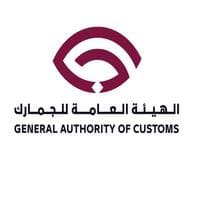
Official Website: www.customs.gov.qa/
Required documents for customs clearance
Unlock the mystery of customs clearance with our easy-to-grasp guide. We'll shed light on crucial paperwork like the Bill of Lading, Packing List and Certificate of Origin. Never feel lost about CE standard documents of conformity again! Let's beat that shipping paperwork stress together.
Bill of Lading
The Bill of Lading is your golden ticket in the shipping world. While shipping between Qatar and Sweden, it officially passes the ownership baton from the seller to you. Think about it – it's like the referee's whistle signaling that the goods are now yours. It's crucial whether your goods are bobbing up and down on a cargo ship or soaring high in air freight, where it does a similar job under the name Air Waybill (AWB).
Worried about losing paper documents? Opt for a telex release. It's the digital version of the Bill of Lading – making transactions smoother and faster. Remember, it's more than a paper – it's proof of ownership, authority, and assurance in his adventure of international shipping. So, protect and handle it as you would a winning lottery ticket.
Packing List
Shipping your goods from Qatar to Sweden? Don't forget your Packing List. Your items are listed here, detailing the type, quantity, and weight. This is vital for customs officials to identify what's in your shipment, whether it's fifty crates of dates or bulk quantities of industrial machinery. Besides, it's not just needed for sea journeys; air freight requires it too.
You see, an accurate Packing List could save you a world of trouble. Ever tried clearing a shipment without one? It's like navigating a maze blindfolded! This isn't just paperwork; it's proof of what you're shipping. A discrepancy between the declared items and the actual content can lead to delays, extra cost, and even fines. So get it right from the start, and ensure smooth sailing (or flying) for your goods from Qatar to Sweden.
Commercial Invoice
When shipping your goods from Qatar to Sweden, your Commercial Invoice is crucial. It must accurately detail the product's type, weight, and value. Remember to include the terms of delivery (Incoterms), as customs officials rely on this information to apply tariff codes and calculate duties accurately. Misalignment of details in your Invoice with your Bill of Lading or Air Waybill can halt the customs clearance process. To avoid such hassle, ensure these documents share consistent data. As a tip, try using a digital platform that auto-fills these details across all shipping documents seamlessly. This paper trail facilitates smooth operations and helps your business avoid unexpected shipping delays.
Certificate of Origin
In your trade journey from Qatar to Sweden, the Certificate of Origin (COO) plays a pivotal role. This document authenticates the goods' nationality, acting like a 'trade passport.' Its main benefit? Potentially preferential customs duty rates that could save your business a hefty sum. For instance, a Qatar-made furniture piece shipped to Stockholm can leverage lower tariffs using a valid COO, showcasing Qatar as the country of manufacture. Every detail matters in customs clearance, so make sure your COO is accurate and complete to maximize your shipping advantages. This way, your cargo reaches Sweden smoothly and cost-effectively.
Certificate of Conformity (CE standard)
While preparing for your shipment from Qatar to Sweden, a critical document required is the Certificate of Conformity (CE standard). This verifies that your goods meet the high safety, health, and environmental protection requirements of the European Market – this includes Sweden. Unlike quality assurance that broadly checks your production process, the CE marking is about your product meeting specific standards. If you're familiar with the American Market, consider it similar to the FCC Declaration of Conformity.
To be better prepared, directly contact the body issuing the certification and ensure your products adhere to the standards. Secure the CE conformity now and save yourself potential shipment delays and extra costs in the future. Remember, a Certificate of Conformity is not a once-and-for-all; it's important to maintain the standards continuously. Not doing so would risk recalls or even bans from your targeted market, resulting into financial setbacks.
Your EORI number (Economic Operator Registration Identification)
When shipping between Qatar and Sweden, your EORI number is your golden ticket to easing the customs clearance process. Picture it as an exclusive pass given only to registered economic operators. This unique identifier stands as your tracking code which the EU, inclusive of Sweden, uses to monitor your import and export activities. Now, as a business shipping goods, obtaining this number should be top on your list. The process is straightforward - simply register with your home country's customs authorities. Remember, without this number, your shipments could face significant delays or rejections at the customs. Your immediate action? Register for an EORI number and factor it into your shipping strategy from Qatar to Sweden.
Get Started with DocShipper
Struggling with customs clearance between Qatar and Sweden? Let DocShipper streamline your shipping journey. Our experienced team oversees every step of the customs process, ensuring a hassle-free experience. Ready for an effortless cross-border trade? Contact us for a free quote within 24 hours. Move forward without the tangled red tape, move with DocShipper.
Prohibited and Restricted items when importing into Sweden
Dealing with Swedish customs can feel like a complex maze, right? Your shipment can get stalled or rejected if it carries prohibited or restricted items. To avoid surprises and frustration, it's crucial to understand Sweden's import regulations. Let's dive into the essentials to keep your freight flowing smoothly.
Restricted Products
- Firearms and Ammunition: To import these, you have to apply for a permit from the Swedish Police Authority.
- Pharmaceuticals: For shipping these, you need a license from the Medical Products Agency.
- Live Animals and Plants: Importing these products requires a permit from the Swedish Board of Agriculture.
- Alcohol and Tobacco: Importing these, you will need a license from the Alcohol and Tobacco Tax and Trade Bureau.
- Radioactive Substances: You have to apply for a license from the Swedish Radiation Safety Authority.
- Cultural Artifacts and Antiques: If considering importing these, apply for a permit from the National Heritage Board.
- Offensive Weapons: The import of these requires a special permit which you can apply for from the Swedish Police Authority.
- Food and Agricultural Products: You have to apply for an import license from the Swedish National Food Administration.
- Hazardous Chemicals: For these, you need a permit from the Swedish Chemicals Agency.
- Endangered Species (animals and plants): To import these, apply for a permit from the Swedish Environmental Protection Agency.
- Encryption Software: These items require a license from the Swedish Post and Telecom Authority.
Prohibited products
- Narcotics, drugs, psychoactive substances, and paraphernalia
- Certain weapons, including switchblade or automatic knives, knuckles, and stun guns
- Obscene or immoral items including pornography
- Any goods promoting hate, violence or discrimination based on race, religion, and gender
- Products from endangered animals, including ivory and fur
- Fireworks, explosives, and other hazardous substances without appropriate authorizations
- Tobacco products not adhering to Swedish regulations and labeling requirements
- Alcohol above certain quantities without proper licensing and permits
- Live animals, without appropriate permissions and health certificates
- Certain plant species, in particular, invasive or harmful species
- Radioactive materials
- Medicines without appropriate licenses or prescriptions
- Fake goods or items infringing intellectual property rights
Are there any trade agreements between Qatar and Sweden?
Absolutely! Qatar and Sweden, as part of the EU, are governed by the Cooperation Agreement between the European Union and the Gulf Cooperation Council. While not yet a Free Trade Agreement, it seeks to foster increased economic collaboration. Notably, both countries are actively involved in trade talks and networking initiatives to streamline processes and minimize duties. Keep an eye on these evolving agreements as they may favorably impact your overseas shipping in the future.
Qatar - Sweden trade and economic relationship
The Qatar-Sweden economic bond boasts a rich history, marked by a substantial growth trajectory. Qatar, with its vast wealth in natural resources, chances upon a lucrative trading partner in Sweden, known for its strength in innovation and technology sectors. Historically, these nations have cooperated in industries like healthcare, renewable energy, and infrastructure, trading commodities ranging from petroleum products to electric machinery.
In 2023, the total trade volume notched an impressive figure of $300 million, reinforcing the vibrant, pragmatic relationship between these nations. Over the years, their economic entanglement has flourished, revealing potential for further opportunities and growth.
Your Next Step with DocShipper
Relieve the stress of shipping between Qatar and Sweden. Entrust your cargo to DocShipper, a trusted partner who understands the complexities of customs clearance, duties, and transport coordination. Leave the logistics to us, and focus on what you do best: growing your business. Ready for hassle-free shipping? Contact us today. Let's move forward together.
Additional logistics services
Dig deeper into our all-inclusive logistics solutions beyond shipping and customs, designed to streamline your supply chain from start to finish, stress-free. DocShipper's got your back, every step of the way.
Warehousing and storage
Finding the right warehousing solution can be as daunting as a desert mirage in Qatar. Will your specialty goods thrive, or wilt in uncontrolled conditions? Honest, we've seen too many experienced businesses underestimate this.
Packaging and repackaging
Shipping from Qatar to Sweden requires understanding product sensitivity and climate considerations. With a trustworthy freight forwarder, you can ensure your goods are packed and repacked properly. For instance, fine art requires specialized crating while pharmaceuticals need temperature-controlled packaging. An experienced agent makes all the difference, ensuring your goods arrive intact and within compliance.
Cargo insurance
Arranging cargo insurance will cover your goods during transport, unlike fire insurance that protects against specific hazards at a fixed location. An example of prevention? Let's say some mishap causes your goods to get lost at sea; cargo insurance ensures you're not left high and dry, financially. It’s like having a safety net - making it worth every penny!
Supplier Management (Sourcing)
Finding the right supplier can feel like looking for a needle in a haystack. Imagine that, you're a Swedish business seeking to source goods from Qatar, but the language barrier seems insurmountable. DocShipper transforms this maze into a walk in the park! We support you in identifying responsible suppliers in Asia, East Europe, among others, and help you sail through the procurement journey. Find your path to fruitful business relationships on foreign ground with us.
Personal effects shipping
Moving from Qatar to Sweden with your treasured items? Our team handles delicate and bulky items with the utmost care. Say, you're relocating with a precious chandelier or a grand piano, we ensure maximum protection and hassle-free custom clearance. Relax while we provide a flexible solution tailored to your unique needs.
Quality Control
Ensuring your goods pass strict quality checks is crucial when shipping from Qatar to Sweden. Imagine your shipment of custom furniture getting stuck at Swedish customs because of subpar craftsmanship; not the scenario you'd want, right? Quality control service helps spot flawed items early, preventing issues during customs clearance in Sweden - a significant advantage when you're on a strict timeline.
Product compliance services
When moving goods across borders, it's paramount that your products abide by all international and local regulations. Our Product Compliance Services cut through the red tape. We carry out rigorous laboratory tests, securing necessary certifications to ensure your cargo meets every rule in its new market. With our help, potential customs holdups become a thing of the past. No fuss, just smooth sailing. Imagine shipping a batch of electronic goods and not worrying about compliance. We make that happen.
FAQ | Freight Shipping between Qatar and Sweden | Rates - Transit times - Duties and Taxes
What is the necessary paperwork during shipping between Qatar and Sweden?
When shipping from Qatar to Sweden, the most important paperwork you will need includes the bill of lading for sea freight or airway bill for air freight. Don't worry! We at DocShipper usually handle this for you. What you need to provide is the packing list and the commercial invoice. Depending on what goods you're shipping, additional documents such as an MSDS or certification might be required. Rest assured, our team is committed to guiding you through every step of the process ensuring a hassle-free shipment.
Do I need a customs broker while importing in Sweden?
Indeed, we highly recommend the use of a customs broker when importing goods into Sweden. Navigating the complexities of customs paperwork and protocol can be a daunting challenge. To ensure smooth sailing, you'll need to submit specific mandatory details and prepare certain documents - a task that can be intricate and time-consuming. As DocShipper, we routinely represent cargos at customs in many shipments. By engaging our services, you'll be able to avoid administrative burdens and potential slip-ups, allowing you to focus on your business while we manage the entire customs process for you.
Can air freight be cheaper than sea freight between Qatar and Sweden?
It's not straightforward to pin down whether air freight between Qatar and Sweden could be cheaper than sea freight as it hinges on a multitude of factors, like route, weight, and volume. As a point of reference though, if your cargo is under 1.5 Cubic Meters or weighs less than 300 kg (660 lbs), air freight may indeed be a more cost-effective alternative. Rest assured, we at DocShipper will always task your dedicated account executive with scouring for the most competitive rates, tailored to your specific needs.
Do I need to pay insurance while importing my goods to Sweden?
While insurance is not an obligation when importing goods to Sweden or any destination globally, at DocShipper, we highly recommend it. There are numerous potential incidents, including damage, loss, or theft, that could affect your shipment. By insuring your goods, you're essentially safeguarding your business from these unexpected expenses. It's a minor investment that can save you from significant losses in the event of an unforeseen mishap during transit.
What is the cheapest way to ship to Sweden from Qatar?
Looking at the geographical conditions and trade lanes, sea freight is the most cost-effective method to ship goods from Qatar to Sweden. However, make sure to consider the longer transit times. If time isn't an issue, we at DocShipper would recommend this option for its great balance of cost and environmental impact.
EXW, FOB, or CIF?
Choosing between EXW, FOB, or CIF hinges on your relationship with your supplier and their logistics expertise. It's common for suppliers to sell under EXW (at the door of their factory) or FOB (including all local charges till the original terminal). However, given that suppliers may not be logistics professionals, it's advisable to allow us, at DocShipper, to handle the international freight process through to the destination. We offer a comprehensive door-to-door service, helping you navigate the logistics journey with ease and confidence regardless of the terms your supplier offers.
Goods have arrived at my port in Sweden, how do I get them delivered to the final destination?
If your goods have reached the destination port in Sweden under CIF/CFR incoterms, you will need a customs broker or a freight forwarder to clear the goods, pay import charges, and arrange for final delivery. However, our team at DocShipper can manage a DAP incoterm, which means we'll handle these procedures for you. For further clarity on this issue, please contact your dedicated account executive at DocShipper.
Does your quotation include all cost?
Absolutely, we ensure our quotes feature a transparent breakdown of costs, with no unpleasant hidden fees. Included are all expenses except for duties and taxes at your destination. However, your dedicated account executive can assist with estimating these additional costs for you. We prioritise clarity and trust with our clients.
